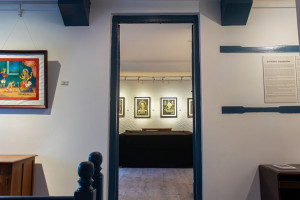Arts
Classic Gallery’s latest exhibition fails to leave an impression
‘The Intersection of Ten Thoughts Part II’ is a big miss not because the artworks are dull, but because the gallery relies on a short, four-minute video to depict 20 artworks of 10 contemporary artists.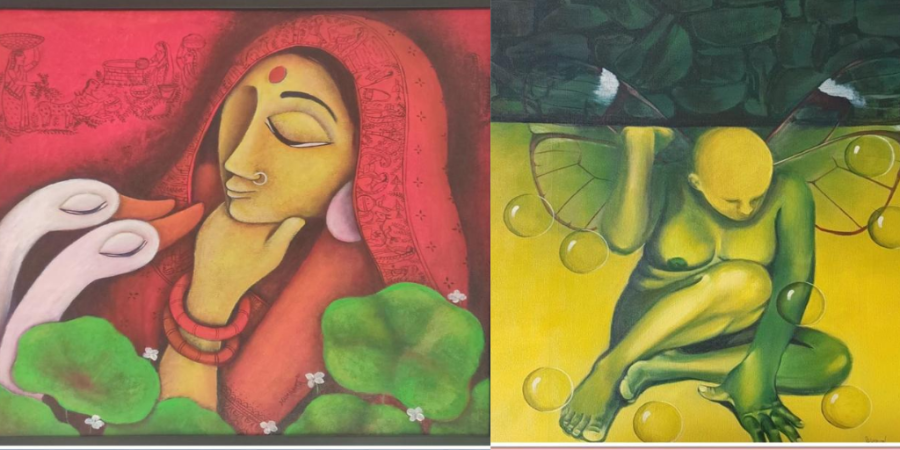
Ankit Khadgi
Almost two-third of the canvas is taken up by a woman, with her head bowed and body hunched, as though crammed inside a cocoon. There are bubbles surrounding her and wings sprout from her back. The composition of the work and how the subject is placed in the painting indicates what the artist is trying to convey: the realities of women who are stopped from doing what they want to do, yet they evolve to become who they truly are.
Titled ‘Metamorphosis’, the artwork by Deepmala Maharjan is one among the 20 artworks by 10 contemporary artists that are exhibited in the ongoing virtual exhibition, ‘ The Intersection of Ten thoughts Part II’, organised by Classic Gallery.
In the painting, Maharjan uses the process of metamorphosis as a metaphor to show how women are trapped inside social circles. Before a caterpillar turns into a butterfly, it also has to go through a static stage called pupa, where the caterpillar makes a cocoon and stays inside it. In the painting too, Mahrajan depicts this very process.
What makes this painting intriguing is Maharjan’s clever depiction of using the lifecycle of a butterfly to convey her message. In the process of becoming butterflies, caterpillars first become pupa, a stage where they build little liquid sacks to protect themselves. In the painting, the liquid is represented by the bubbles, which also stand for societal bubbles that are reinforced by people to control women. These bubbles stop her from spreading her wings, making the painting successful in displaying how women are prevented from flying by outside interventions, even when freedom is promised to them innately.
The second painting of Maharjan deals with the same theme; however, here, the woman has developed her wings fully—meaning the stage of metamorphosis has been completed. Despite her wings, the woman, like in the previous painting, is bowing her head, which signifies that even she still isn’t allowed to fly—society still controls her.
Another evocative painting that reflects the plight of women is Kunti Shree Thapa’s ‘The Story of My Mother’. Using a mix-media approach, Thapa shows viewers a woman (drawn on the left side of the artwork) who is sewing, while leaves and small figures of kitchen utensils surround her.
Through this artwork, Thapa masterfully presents how like her mother, in our society a woman’s position is limited within the sphere of her kitchen, where she is surrounded by vegetables and utensils only.
In the artwork, the figure of the woman is comparatively much smaller than the vegetables and utensils. This conscious choice on the artist’s behalf depicts how for many women, kitchen and domestic work becomes their whole identity and her individuality gets lost in the midst of taking responsibility for household chores.
Likewise, Thapa uses vertical composition more than horizontal, making the artwork look like a portrait of mothers, increasing the impact and message it intends to spread—reflecting the state of women, whose individuality always takes a backseat as they are forced to spend more time doing household works.
Similarly, making the current pandemic as his theme, Sanjeet Maharjan’s two artworks in the exhibition, ‘Compulsion’ and ‘Confinement Crave’, are also visually engaging. In ‘Confinement Crave’ he replicates human cravings that most people could relate to, like going out for dining or eating their favourite food or the intimacy we share with our partners, things that were not possible for us to get for months because of the lockdown.

However, it's the layered composition of ‘Compulsion’ that strikes one more, as through the painting he depicts the harsh reality of how things are going to be difficult for the new generation. In it, juxtaposed against a city that is all gloomy and engulfed with black smoke is a baby’s figure. The baby is wearing a blue mask and is tightly squeezing its eyes. Through this painting, Maharjan depicts the grim reality of the environmental hazards that are bound to make things difficult for the new generation, who will be compelled to wear masks. Similarly, the timing also fits perfectly with the present narrative, where masks have become ubiquitous.
Using the medium of art to depict and preserve her culture, Anisha Maharjan through ‘The Dance’ and ‘Winking Farmer’ creates two artworks where she uses her skill to represent the culture of Newa civilisation. Her first painting, ‘The Dance’, which she mentions is inspired by Henry Matise’s famous artwork by the same name, is aesthetically pleasing and conveys the message she is trying to portray. In the painting, she depicts five women, who are adorned in haku patasi, dancing. While the theme is somehow similar to Matse’s iconic painting, here in Maharjan’s painting the gender is clear, and the subjects are dancing on their own, unlike in Matse’s work, where the dancers (whose gender weren’t clear) were dancing together to a rhythm.

This contrast helps in conveying her intentions of portraying how individuals are carving their own path, forgetting the value of their culture. However, the use of easily identifiable motifs makes the artwork forgettable, as it doesn’t demand enough attention for people to look and spend time thinking about what the artist is trying to say, making the art less engaging.
However, two artists who should be applauded for their fine detailing work are Namrata Singh and Binod Giri. Singh’s ‘In the Nature’ is a telling of the state of happiness derived from nature, which she depicts by encompassing both Mithila and modern art. Playing with vibrant colours like red, blue, green, and using the motifs of woman, swan and lotus leaves, her work is aesthetically pleasing.
Similarly, Giri’s ‘Welcome of Dreams’ portrays the Capital, which is framed inside an intricate design in golden colour, as a ‘golden city’, where dreams come true.
However, both the artists’ efforts are let down by the gallery, as it fails to provide a platform where we can see and understand the designs more deeply. In the name of an exhibition, the gallery has uploaded a four-minute-long video on YouTube, which also includes the introduction of the creators and their intention behind the art.
While it is understandable that this approach of conducting exhibitions is new, the way the gallery has squeezed in the artworks of 20 artists in just four minutes reflects lazy work and honestly fails to make the overall exhibition approachable and engageable for a larger audience.
Despite this shortcoming, however, the gallery should be applauded for giving space to 10 contemporary artists whose artworks are nuanced and completely different from each other in terms of themes and methods. If only the gallery had spent more time making the experience more immersive and exclusive by dividing the exhibition, perhaps into 10 separate videos, viewers would not be left disappointed.




 18.12°C Kathmandu
18.12°C Kathmandu
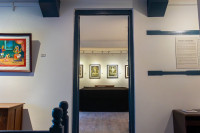
%20(1).jpg&w=200&height=120)
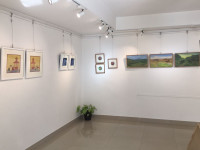
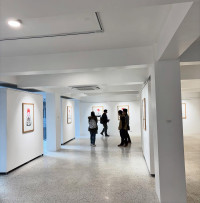
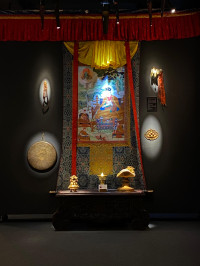
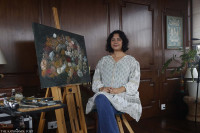
%20(1).jpg&w=300&height=200)
